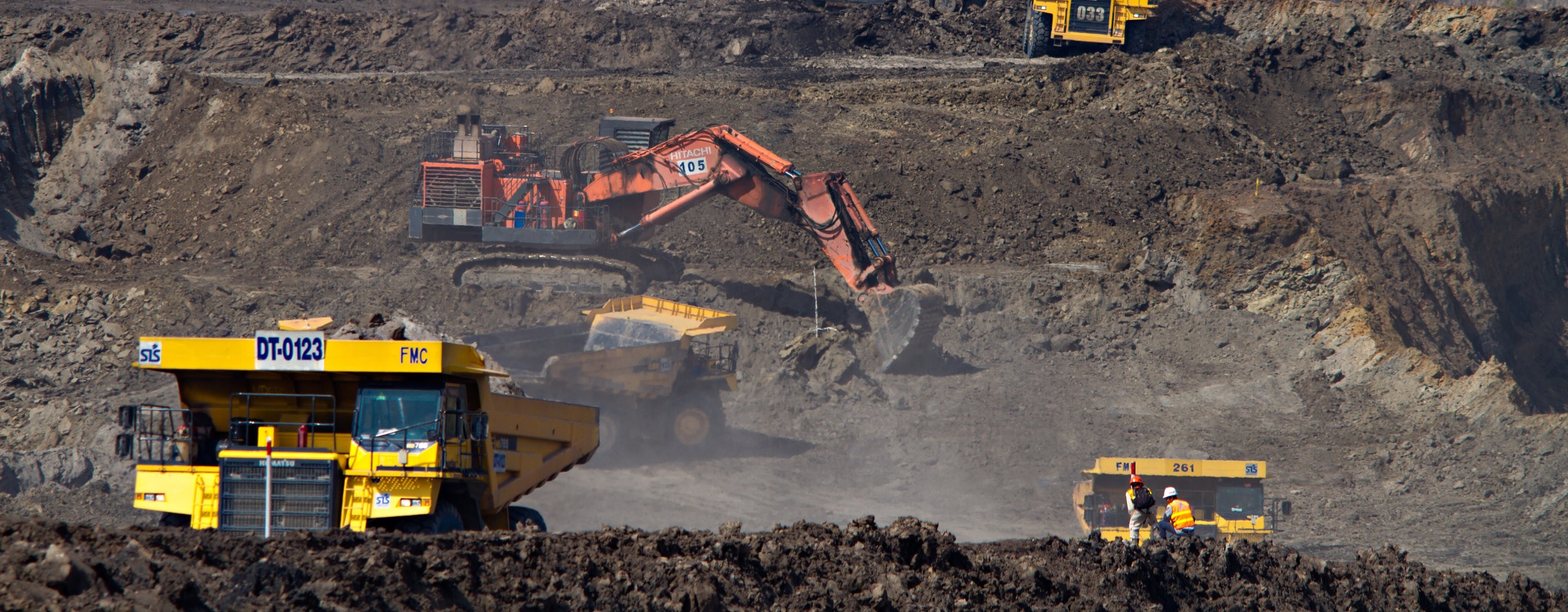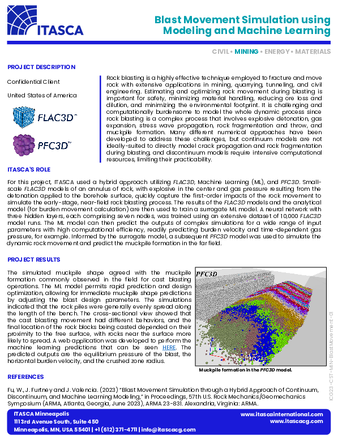Blast Movement Simulation using Modeling and Machine Learning
Project Description
Rock blasting is a highly effective technique employed to fracture and move rock with extensive applications in mining, quarrying, tunneling, and civil engineering. Estimating and optimizing rock movement during blasting is important for safety, minimizing material handling, reducing ore loss and dilution, and minimizing the environmental footprint. It is challenging and computationally burdensome to model the whole dynamic process since rock blasting is a complex process that involves explosive detonation, gas expansion, stress wave propagation, rock fragmentation and throw, and muckpile formation. Many different numerical approaches have been developed to address these challenges, but continuum models are not ideally-suited to directly model crack propagation and rock fragmentation during blasting, and discontinuum models require intensive computational resources, limiting their practicability.
Itasca's Role
For this project, ITASCA used a hybrid approach utilizing FLAC3D, Machine Learning (ML), and PFC3D. Small-scale FLAC3D models of an annulus of rock, with explosive in the center and gas pressure resulting from the detonation applied to the borehole surface, quickly capture the first-order impacts of the rock movement to simulate the early-stage, near-field rock blasting process. The results of the FLAC3D models and the analytical model (for burden movement calculation) are then used to train a surrogate ML model. A neural network with three hidden layers, each comprising seven nodes, was trained using an extensive dataset of 10,000 FLAC3D model runs. The ML model can then predict the outputs of complex simulations for a wide range of input parameters with high computational efficiency, readily predicting burden velocity and time-dependent gas pressure, for example. Informed by the surrogate model, a subsequent PFC3D model was used to simulate the dynamic rock movement and predict the muckpile formation in the far field.
Project Results
The simulated muckpile shape agreed with the muckpile formation commonly observed in the field for cast blasting operations. The ML model permits rapid prediction and design optimization, allowing for immediate muckpile shape predictions by adjusting the blast design parameters. The simulations indicated that the rock piles were generally evenly spread along the length of the bench. The cross-sectional view showed that the cast blasting movement had different behaviors, and the final location of the rock blocks being casted depended on their proximity to the free surface, with rocks near the surface more likely to spread. A web application was developed to perform the machine learning predictions that can be seen HERE. The predicted outputs are the equilibrium pressure of the blast, the horizontal burden velocity, and the crushed zone radius.
Muckpile formation in the PFC3D model.
References
Fu, W., J. Furtney and J. Valencia. (2023) “Blast Movement Simulation through a Hybrid Approach of Continuum, Discontinuum, and Machine Learning Modeling,” in Proceedings, 57th U.S. Rock Mechanics/Geomechanics Symposium (ARMA, Atlanta, Georgia, June 2023), ARMA 23-831. Alexandria, Virginia: ARMA.

